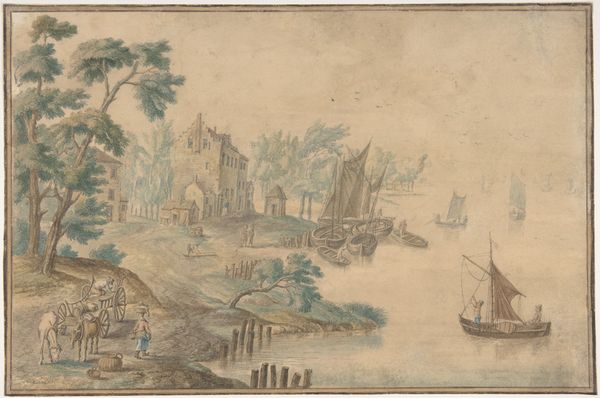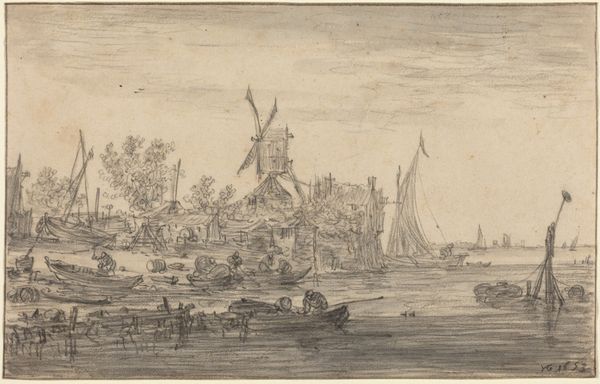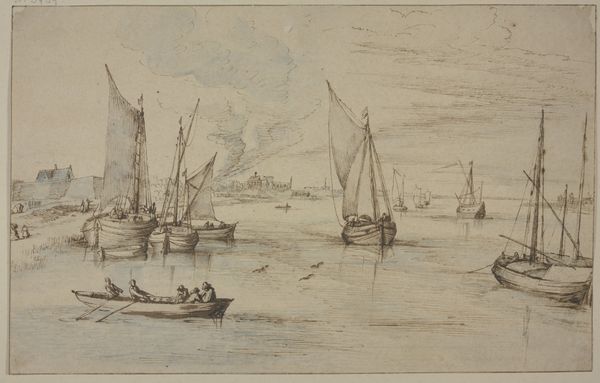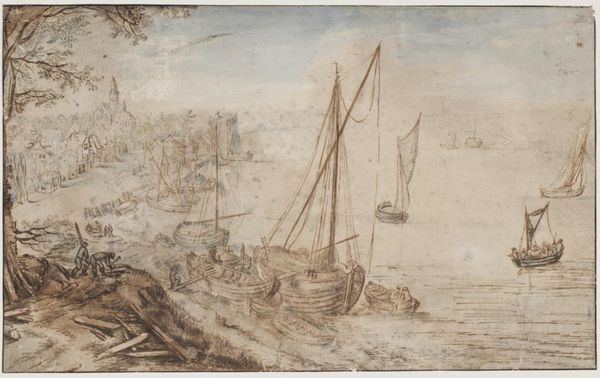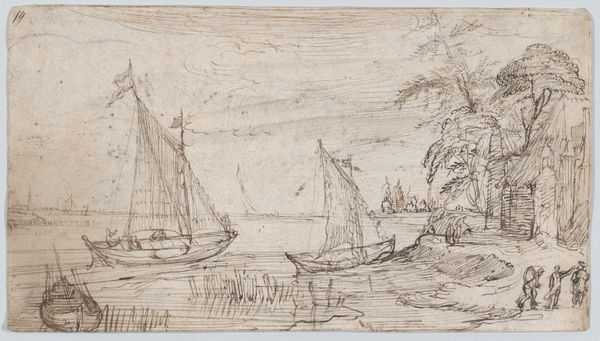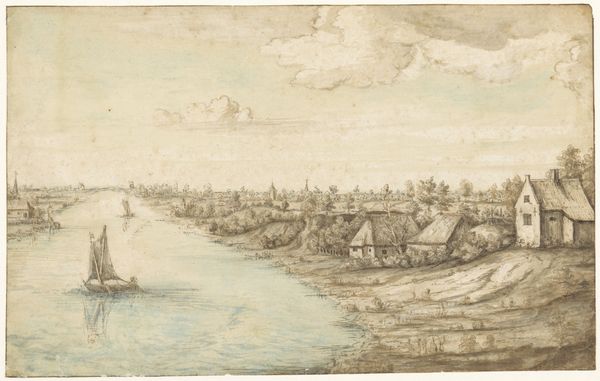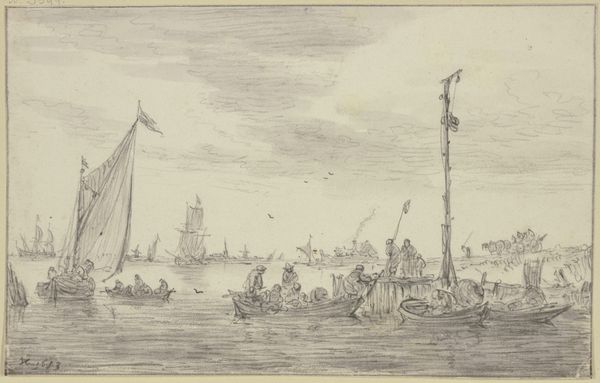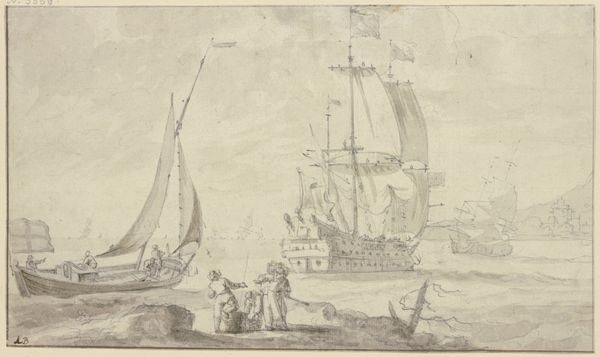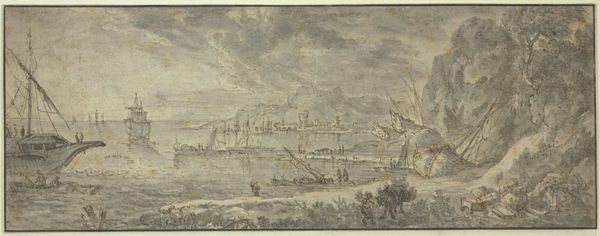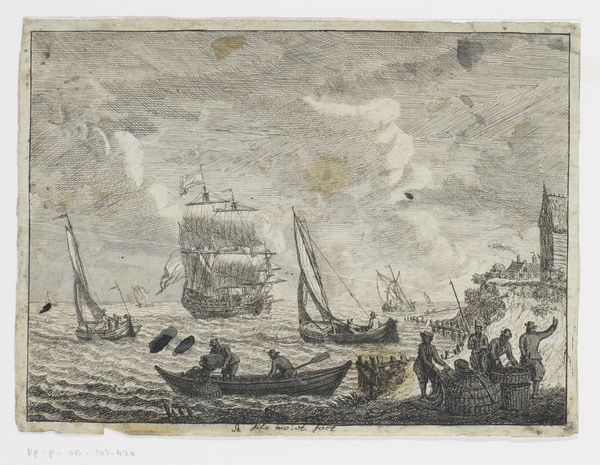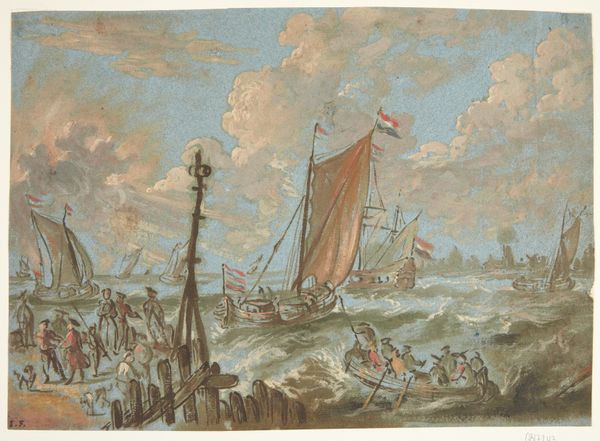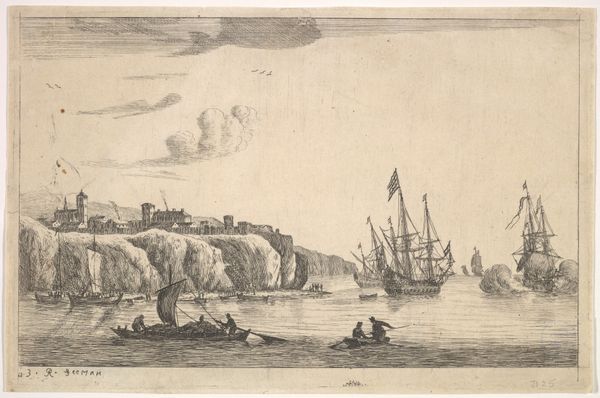
Landscape with River in the Center, with Ferryboat 1700 - 1800
0:00
0:00
drawing, print
#
drawing
#
boat
#
water colours
# print
#
human-figures
#
landscape
#
river
#
house
#
possibly oil pastel
#
handmade artwork painting
#
fluid art
#
coffee painting
#
underpainting
#
human
#
painting painterly
#
watercolour bleed
#
watercolour illustration
#
watercolor
Dimensions: 8 3/4 x 13 3/4 in. (22.2 x 34.9 cm)
Copyright: Public Domain
Curator: Looking at this composition, I'm immediately struck by how the soft, diffused light creates such a melancholic atmosphere. The limited palette seems to enhance this feeling of quietude. Editor: Indeed. What we have here is a piece called "Landscape with River in the Center, with Ferryboat," created by an anonymous artist sometime between 1700 and 1800. It resides at the Metropolitan Museum of Art. The materials used seem to be a combination of drawing and possibly watercolour, lending it a delicate quality. What I see reflected here are hierarchical power dynamics subtly embedded within seemingly benign landscape portrayals, reflecting on socio-economic realities of river crossings and the movement of peoples during the depicted era. Curator: The structural rhythm created by the boats moving toward the implied vanishing point also plays a vital role in conveying its intended message. Consider the brushwork itself; short, broken strokes construct the sky and water while the figures on the boats are rendered with such minimal detail they are just forms—but it's just so affecting. Editor: Absolutely, it evokes a particular moment in history. The ferryboat becomes a space for understanding class, gender, and maybe even religious identity as people journey together on that river. Consider that journey metaphorically, as many did—life is a river; our crossings shape us. Who gets access to those boats? What power structures govern their use? Curator: I agree that understanding its role as social commentary allows the viewer deeper immersion in a critical evaluation rather than simply experiencing aesthetic beauty, especially given this subtle but definite composition. Editor: We must always remember that such 'simple landscapes' are never ideologically innocent. By understanding such artwork we achieve insight on how even then power was articulated spatially! Curator: Such artworks provide viewers a tangible entry point into historical reflections. I am still struck by its affecting melancholy. Editor: Yes, a sober perspective on journeys of everyday life.
Comments
No comments
Be the first to comment and join the conversation on the ultimate creative platform.
